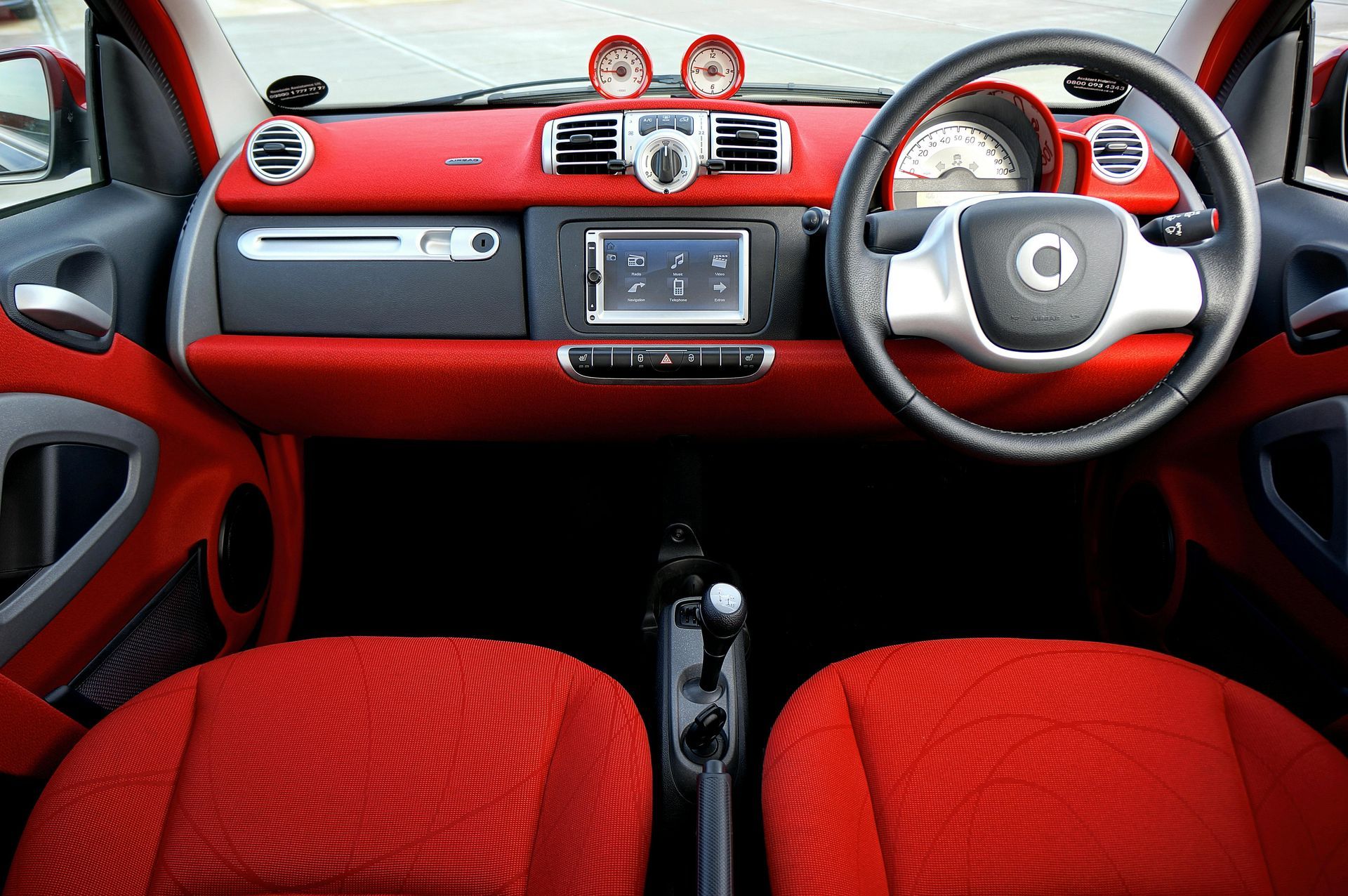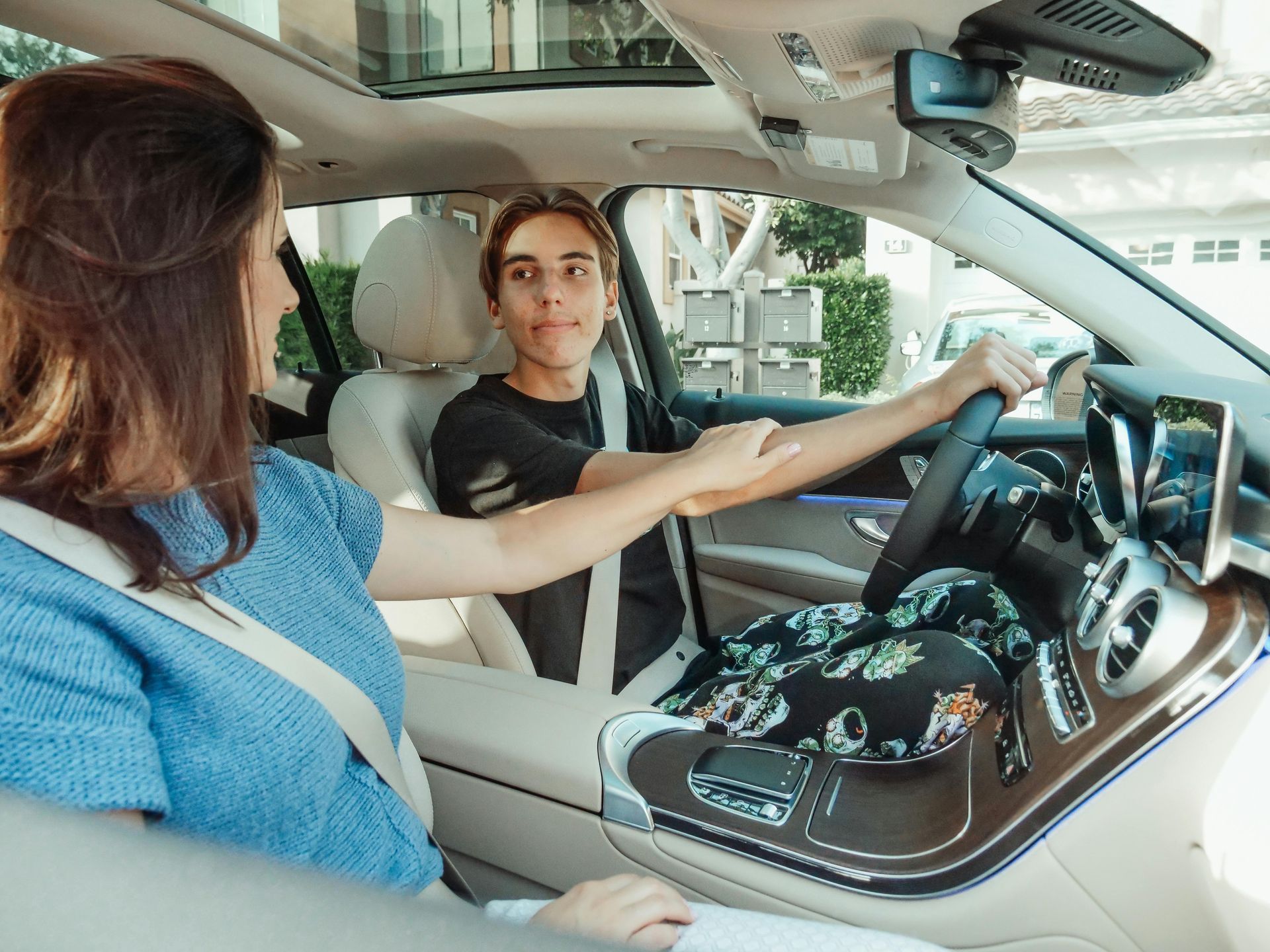Save Money with Car Insurance Near Me Today
Your Guide to Car Insurance Near Me: Save Money Today
Key Highlights
- Understand how factors like age, driving record, and location influence your car insurance rates.
- Explore different types of insurance coverage, such as liability coverage, to find the right car insurance policy for your needs.
- Learn about significant discounts for young drivers, including good student and safe driver incentives.
- Compare the pros and cons of staying on a parent's auto insurance policy versus getting your own.
- Discover special programs like usage-based insurance that can help lower premiums.
- Follow a step-by-step guide to research providers and purchase the best auto insurance.
Introduction
Finding the right car insurance, especially for new and teen drivers, is a critical step toward achieving both financial security and peace of mind on the road. While auto insurance can seem more expensive for those with less experience, many options exist to find affordable rates. This guide will walk you through everything you need to know, from understanding key terms and coverage types to finding discounts that can lower your costs. Let's explore how you can secure an insurance policy that fits your needs and budget.
Understanding Car Insurance for New and Young Drivers
For any new driver or teen driver, car insurance premiums are often higher. An insurance company views inexperience as a greater risk, which is reflected in the cost of an insurance policy. Statistically, younger drivers have higher accident rates, and this directly impacts pricing.
However, this doesn't mean you are without options. Your driving record is a key factor, and establishing safe habits early can lead to better rates over time. We will explore the specifics of why car insurance matters for beginners and the fundamental terms you need to know.
Why Car Insurance Matters for Beginners
Securing car insurance is more than just a legal requirement; it's about giving yourself essential financial protection. In the event of an accident, the costs for vehicle repairs and medical bills can be overwhelming. A solid insurance plan shields you from bearing these high expenses on your own, preventing a single incident from causing a major financial setback.
Beyond the monetary aspect, having the right coverage provides invaluable peace of mind. Knowing you are protected allows you to focus on developing safe driving skills without the constant worry of "what if." This confidence is crucial for a new driver learning to navigate the complexities of the road.
Ultimately, car insurance is a safety net. It ensures that a mistake or an unfortunate event doesn't define your financial future. For a beginner, this protection is a critical component of responsible driving, allowing you to build experience securely.
Key Terms and Definitions in Car Insurance
Navigating your insurance policy can be confusing if you don't understand the language. Familiarizing yourself with a few key terms will empower you to make informed decisions about your coverage. This knowledge helps you understand exactly what you're paying for.
Here are some fundamental definitions to get you started:
- Liability Coverage: This covers costs for bodily injury and property damage liability if you cause an accident.
- Collision Coverage: This pays to repair or replace your vehicle after an accident with another car or object.
- Comprehensive Coverage: This protects your car from non-collision events like theft, vandalism, or weather damage.
- Deductible: This is the amount you pay out of pocket for a claim before your insurance coverage kicks in.
Understanding these components is the first step in determining how much coverage you actually need. Your choice will depend on your vehicle's value, your budget, and your state's legal requirements.
Factors That Influence Car Insurance Costs
Have you ever wondered why your auto insurance quote is different from a friend's? Several key factors determine car insurance costs, and they are unique to each individual. Insurance companies assess your risk profile using details like your age, driving history, location, and even your credit history in some states.
These elements combine to calculate your final insurance premiums. A driver with years of clean driving experience will typically receive lower insurance rates than a brand-new driver. In the following sections, we'll examine how your age, location, and vehicle type specifically affect what you pay.
Age and Driving Experience Impact

Age is one of the most significant factors in determining insurance rates. A teen driver is considered high-risk due to a lack of experience behind the wheel, which statistically correlates with a higher likelihood of accidents. This is why a new driver, especially one in high school, will see higher premiums than a 30-year-old with a long, clean driving record.
The good news is that these rates aren't permanent. As you get older and gain more experience on the road, your premiums will typically decrease, provided you avoid accidents and traffic violations. Every year of safe driving demonstrates to insurers that you are a lower risk to cover.
This is also a key consideration when deciding whether to get your own policy or stay on a parent's. While an individual policy offers independence, the rates for a young driver are often much higher than when added to a family's plan, where other drivers' experience can balance the risk.
Location-Based Rate Differences
Where you park your car at night has a surprising impact on your insurance rates. An insurance company uses your zip code to assess the risk associated with your location. If you live in a densely populated urban area, you will likely pay more than someone in a quiet, rural town.
This difference is based on several location-specific factors. Insurers analyze data related to:
- Traffic congestion
- Rates of theft and vandalism
- Frequency of accidents in the area
Because of these variables, moving even a short distance to a new zip code can change your insurance costs. When shopping for quotes, always provide your precise address to get the most accurate rate. Your location is a key piece of the puzzle that an insurance company uses to calculate your premium.
Vehicle Type and Its Effect on Premiums

The car you choose to drive plays a major role in how much you pay for auto insurance. High-performance sports cars are more expensive to insure because their speed capabilities increase the risk of serious accidents and property damage. In contrast, a conventional sedan or SUV is typically cheaper to cover.
Insurers also look at the cost to repair or replace your vehicle. A newer, more expensive car will require higher premiums for full coverage because the potential payout from the insurer is greater. The vehicle's safety features are also important; cars equipped with anti-theft devices, airbags, and automatic braking systems can often qualify for discounts.
Ultimately, the vehicle type is a crucial variable. If you're a young driver looking to keep costs down, choosing a modest, safe vehicle is a smart financial move. It's less expensive to repair and poses a lower risk, translating directly to savings on your insurance.
Exploring Car Insurance Coverage Options
Choosing the right insurance products for your policy is about finding a balance between your budget and your need for protection. Every state requires a minimum amount of liability coverage, but this basic protection may not be enough to cover all expenses in a serious accident.
To ensure you're fully protected, you can add comprehensive coverage, collision coverage, and other optional coverages. Understanding what each of these does will help you build a policy tailored to your specific situation. The next sections will explain these key coverages in more detail.
Liability Coverage Explained
Liability coverage is the foundation of any car insurance policy and is required by law in most states. It is designed to protect you financially if you are found at fault in an accident. This coverage does not pay for your own injuries or vehicle damage, but rather for the costs incurred by others.
This insurance coverage is split into two main parts. The first is bodily injury liability, which pays for the medical expenses of people injured in an accident you cause. The second is property damage liability, which covers the cost of repairing or replacing another person's vehicle or property that you damaged.
Each state sets minimum liability limits, but it is often a good idea to purchase more than the minimum. If you cause an accident where the costs exceed your liability limits, you could be held personally responsible for paying the remaining amount, putting your assets at risk.
Comprehensive and Collision Coverage
While liability coverage protects you against costs for others, what about damage to your own car? This is where collision and comprehensive coverage come in. These are optional but often required if you have a loan on your vehicle. They provide crucial financial protection for your investment.
Collision coverage, sometimes called collision insurance, pays to repair or replace your vehicle if it's damaged in an accident with another car or if it hits an object, like a fence or a pole. It applies regardless of who is at fault for the incident.
Comprehensive coverage protects your car from damage caused by events other than a collision. This includes things like theft, vandalism, fire, hail, or hitting an animal. Together, these two coverages provide a robust safety net, making them a wise choice for any auto insurance policy on a car you can't afford to replace out-of-pocket.
Uninsured/Underinsured Motorist Coverage

What happens if you're in an accident caused by someone who has no insurance or not enough to cover your costs? This is where uninsured motorist coverage and underinsured motorist coverage become essential. These protections are designed to cover your expenses in this exact scenario.
Uninsured motorist coverage steps in to pay for your medical payments and sometimes vehicle repairs if the at-fault driver has no insurance at all. Underinsured motorist coverage applies when the at-fault driver has insurance, but their liability limits are too low to cover the full extent of your bills.
While not required in every state, adding this coverage to your insurance policy is a smart decision. It ensures you won't be left with significant out-of-pocket expenses due to another driver's lack of responsibility, providing a critical layer of financial security.
Cheapest Car Insurance Options for Young Drivers
Finding affordable car insurance is a top priority for most young drivers. Although car insurance rates are typically higher for this demographic, there are many effective strategies to secure a lower premium. You don't have to settle for the first quote you receive.
By actively comparing providers, taking advantage of online tools, and looking into state-specific programs, you can find a policy that provides great coverage without breaking the bank. The following sections will detail how to compare local providers, weigh online versus in-person quotes, and identify special programs to find the best deal.
Comparing Local Providers for Best Rates
One of the most effective ways to find the best rates is to shop around and compare quotes from multiple car insurance companies. Don't assume that every insurance provider will offer you the same price; rates can vary significantly from one company to the next based on their underwriting criteria.
When comparing local providers, look beyond just the price. Consider factors like customer service reviews, the ease of the claims process, and the financial stability of the company. An incredibly cheap rate isn't a good deal if the company is difficult to work with when you need them most.
Many car insurance companies cater to different types of drivers. Some, like The General, specialize in providing coverage for drivers who may be considered higher risk, while others, like GEICO, offer a wide range of discounts. Researching which ones are known for offering good rates to teenagers can save you time and money.
| Insurance Provider | Known For | Potential Discounts for Young Drivers |
|---|---|---|
| GEICO | Wide range of discounts and user-friendly mobile app. | Good student, safe driver (DriveEasy), family policy. |
| The General | Insuring drivers with less-than-perfect records. | Welcomes drivers that other companies may not cover. |
| Progressive | Snapshot program, strong online tools. | Good student, distant student, multi-policy. |
| State Farm | Large agent network and good customer service. | Steer Clear program, good student, driver training. |
Online vs. In-Person Insurance Quotes
When you're ready to get quotes, you have two main options: going online or meeting with an insurance agent in person. Both methods have their advantages, and the best choice depends on your personal preference. Getting online quotes is fast, convenient, and allows you to compare multiple companies from home.
Many insurers have a user-friendly mobile app or website that can generate a quote in minutes. This approach is great for those who are comfortable with technology and want to see their options quickly. The benefits of this method include:
- Speed and convenience
- Ability to compare many providers at once
- No pressure to buy immediately
On the other hand, speaking with an insurance agent provides a more personalized experience. An agent can answer your specific questions, explain complex coverage options, and ensure you're getting all the discounts you qualify for. This human touch and expert customer service can be invaluable, especially for first-time insurance buyers.
State-Specific Cheap Insurance Programs
Your location plays a significant role in determining your insurance costs, as each state has its own minimum coverage requirements and regulations. Some states may even have specific programs designed to help certain drivers find cheap insurance. It's always a good idea to investigate what options are available where you live.
For example, states like North Carolina have unique rules and markets that can affect rates. Investigating these state-specific programs or nuances can reveal opportunities for savings that you might otherwise miss. An insurance agent local to your area would be particularly knowledgeable about these options.
While not all states have government-sponsored programs specifically for young drivers, researching your state's department of insurance website is a great starting point. You may find resources, consumer guides, or information on low-cost auto insurance plans available to eligible residents, helping you reduce your overall insurance costs.
Discounts Available for Young and New Drivers
One of the most direct ways to lower high insurance premiums is by taking advantage of discounts. Insurance companies offer a wide variety of discounts specifically aimed at young and new drivers, rewarding them for academic achievement and safe driving behaviors.
From the popular good student discount to savings for completing a defensive driving course, these opportunities can significantly reduce your costs. You can also explore flexible payment plans that suit your budget. The following sections will detail some of the most impactful discounts you can pursue.
Safe Driver Incentives
Proving you're a safe driver is another powerful way to lower your auto insurance policy costs. Insurers reward drivers who demonstrate consistent, safe driving behaviors. The most fundamental way to do this is by maintaining a clean driving record, free of accidents and moving violations.
Beyond that, many companies now offer usage-based insurance programs. These programs use a mobile app, like GEICO's DriveEasy, to monitor your habits on the road, such as braking, acceleration, and phone use. Simply enrolling can earn you an initial discount, with the potential for even greater savings at renewal if you prove you are a safe driver.
These incentives are especially beneficial for young drivers, as it gives you a tangible way to counteract the high rates associated with inexperience. By actively practicing safe driving, you can earn discounts that make your premium much more affordable.
Multi-Car and Family Policy Discounts

Adding a young driver to an existing policy is often one of the biggest money-savers. Instead of purchasing a standalone policy, joining a parent's family policy is usually much more affordable. Insurers provide significant discounts for having a multi-car household insured with them.
This is because the risk is spread out among multiple drivers and vehicles, some of whom likely have long, clean driving records. This helps to balance the higher risk associated with an inexperienced driver. This is a key reason why adding a teen to an existing policy is cheaper than them getting their own.
You can also unlock multi-policy discounts by "bundling" your car insurance coverage with other policies from the same provider, such as homeowners or renters insurance. Insurers reward this loyalty with lower overall premiums, making it a smart strategy for families looking to maximize savings.
Should Young Drivers Stay on Parents’ Policy or Get Their Own?
A common question for families with a teenage driver is whether it's better to add them to the family policy or for the young person to get their own policy. The answer depends on factors like cost, living situation, and car ownership. Staying on a parent's plan is almost always the cheaper option.
However, there are situations where getting an individual policy makes more sense, especially as a young driver gains independence. An insurance agent can help you weigh the pros and cons to make the right decision. Let's explore these two paths more closely.
Pros and Cons of Family Policies
Nearly every insurance company offers a variety of discounts that can significantly lower your insurance premiums. The key is to ask your agent or check online to see which ones you qualify for, as they are not always applied automatically. Even small discounts can add up to substantial savings over the course of a year.
Common discounts are often related to your vehicle, your driving habits, and your personal profile. For example, insuring more than one car or bundling your auto policy with your home or renters insurance can lead to some of the biggest savings.

Don't overlook any potential savings. Inquire about these common discounts to see if you can reduce your average cost:
- Good Driver Discount: For maintaining a clean driving record free of accidents and violations.
- Good Student Discount: For young drivers who maintain a high GPA.
- Anti-Theft Device Discount: For having factory-installed or certified security systems.
- Low-Mileage Discount: For driving less than the average number of miles per year.
- Defensive Driving Course Discount: For completing an approved safety course.
Tips for Lowering Your Premiums in 2025
While a family plan is great for starters, there comes a time when a young driver needs to get their own policy. This transition to becoming an independent policyholder is a major step and is usually triggered by key life changes.
One of the most common reasons to switch is moving out of the family home. Most insurers require drivers on a policy to reside at the same address. Once you establish your own residency, you'll need to secure your own insurance. Another trigger is when you purchase and title a vehicle in your own name.
Deciding on the right moment can be tricky. It's a good idea to speak with an insurance agent to discuss your situation. They can provide quotes for your own policy and advise you on when it makes financial and logistical sense to make the switch from being a listed driver to the primary policyholder.
Essential Documents Needed to Get Car Insurance
Applying for car insurance requires you to provide some key information and documents. Being prepared with the right paperwork will make the process smooth and fast. Insurers need these documents to verify your identity, residency, and details about the vehicle you want to cover.
You will typically need some form of proof of identity, your driver’s license, and your vehicle registration. Having these items on hand before you start shopping for quotes will save you time and help you get an accurate price. Let's review exactly what you'll need.
Proof of Identity and Residency
When you apply for insurance coverage, the provider needs to confirm who you are and where you live. This is a standard procedure to prevent fraud and to ensure your policy is priced correctly based on your location. Providing proof of identity is the first step.
Your driver’s license is the most common form of identification used for this purpose. It serves as both proof of identity and confirmation that you are legally permitted to drive. If you're a new driver with a permit, that will often suffice until you are fully licensed.
You will also need to provide proof of residency. This confirms your address, which is a key factor in calculating your rates. Accepted documents often include utility bills, lease agreements, or bank statements that show your name and current address. Having these ready will streamline your application.
Driver’s License Requirements
A valid driver’s license is a non-negotiable requirement for getting car insurance. An insurer needs to see that you are legally authorized to operate a vehicle before they can issue a policy. For a teen driver, this process often begins as soon as they receive their learner's permit.
Some insurance companies require you to notify them when a teen in the household gets a permit, while others only require it once the official driver's license is issued. It is best to check with your insurance agent or provider to understand their specific rules. This ensures there are no gaps in coverage when the new driver starts practicing on the road.
When you apply for a policy, you will need to provide the driver's license number for every driver in the household who will be on the policy. This allows the insurer to look up driving records and accurately assess risk before finalizing you as a policyholder.
Vehicle Registration and Inspection Papers

To insure a car, you must provide information about the vehicle itself. The most important document for this is the vehicle registration. This paper links the car to its owner and includes a critical piece of information: the Vehicle Identification Number (VIN).
The VIN is a unique 17-digit code that tells the insurer everything they need to know about your car, including its make, model, year, and manufacturing history. Insurers use the VIN to determine the car's value, safety features, and risk profile, which all factor into your auto insurance premium.
In some states, you may also need to provide current inspection papers to show the vehicle is roadworthy. When you apply for your insurance policy, have your registration card handy. It contains all the necessary details to get an accurate quote and finalize your coverage.
Special Car Insurance Programs for Teen and First-Time Drivers
Insurance companies recognize that first-time drivers and any teen driver need affordable options. In response, many have developed special programs designed to make coverage more accessible and reward safe practices. These initiatives go beyond standard discounts and offer innovative ways to save.
From usage-based insurance that tracks your driving habits to programs that offer discounts as you gain experience, these options can make a real difference in your premium. The following sections will introduce some of the most common special programs available to new drivers.
Usage-Based Insurance Plans
Usage-based insurance is a modern approach that allows your premium to be influenced by how you actually drive. These programs, often managed through a mobile app, are widely available and are an excellent option for teen drivers looking to prove their safety on the road.
These plans work by tracking your driving habits in real time. The app monitors several key behaviors, including:
- Hard braking and rapid acceleration
- Speed
- Miles driven
- Phone usage while driving
By demonstrating safe driving behaviors, you can earn significant discounts on your premium. Programs like GEICO's DriveEasy have already helped hundreds of thousands of teen drivers receive a discount. It’s a direct way to show you’re a low-risk driver, even without a long history, and can be combined with other savings like student discounts.
Graduated Driver Discount Programs
Many states have Graduated Driver Licensing (GDL) laws, and some insurance companies offer discount programs that align with these systems. The idea is to reward beginners as they gain experience and move through the different stages of licensing, from a learner's permit to a full, unrestricted license.
These graduated driver discount programs recognize milestones in a young driver's journey. For example, you might receive a small discount after completing a certain number of supervised driving hours or after holding a license for a full year without any incidents. It's a way for insurers to encourage and reward safe driving from day one.
As you progress and prove your ability to handle the road responsibly, your rates can decrease. This approach incentivizes safe driving habits early on, which not only saves you money but also contributes to your long-term safety and the safety of others.
Programs for Drivers With No History
Yes, young drivers can absolutely get car insurance with no driving history. While it's true that a lack of experience leads to higher rates, every driver has to start somewhere. Insurance companies are well-equipped to provide insurance coverage to new drivers.
Some companies are especially welcoming to those who might be considered higher risk, including drivers with no history. An insurance provider like The General, for instance, makes it their business to offer policies to drivers that other companies might turn away. This ensures everyone has access to the financial protection required to drive legally.
When you apply, the insurer will base your rate on other factors like your age, location, and vehicle type. As you build a positive driving record over time, you will become eligible for lower rates and more options.
Step-by-Step Guide: How to Get Car Insurance Near You
Finding car insurance near me is a straightforward process when you break it down into manageable steps. The key is to be prepared, do your research, and compare your options carefully. By following a clear plan, you can confidently navigate the market and find the best insurance coverage for your needs.
Whether you prefer to work with an insurance agent or compare car insurance companies online, this guide will walk you through each stage. From gathering your documents to finalizing your policy, let’s get you on the road to being insured.
What You’ll Need to Get Started
Before you start hunting for quotes, the first step is to gather all your necessary documents. Having this information organized and ready will make the application process much faster and more efficient, whether you're applying online or with an agent.
You will need to provide personal information for yourself and any other drivers in your household, as well as details about the car you want to insure. Make a checklist to ensure you have everything you need.
Here are the essential documents and information to have on hand:
- A valid driver’s license or learner's permit for each driver.
- The vehicle registration, which includes the Vehicle Identification Number (VIN).
- Your physical address for proof of residency.
- The odometer reading and any information about safety features on your car.
Step 1: Research Local Insurance Providers
With your documents ready, your next step is to research insurance providers. Not every insurance company is the right fit for every driver, so it's important to find one that offers the best rates and service for your situation. Start by looking up national and local providers that operate in your state.
When researching, don't just focus on finding the lowest price. A company's reputation for customer service is just as important. Read online reviews and check ratings from trusted sources like A.M. Best, which assesses the financial stability of an insurance company. You want a provider that will be there for you when you need to file a claim.
Look specifically for companies known for offering competitive rates to young drivers. Insurers like GEICO and Progressive are often noted for their discounts, while companies like The General are known for accommodating newer or higher-risk drivers. Creating a short list of 3-5 providers is a great starting point.
Step 2: Gather Necessary Documents
Now that you have a list of potential insurers, double-check that you have all the necessary documents we discussed earlier. This step is crucial because incomplete or inaccurate information can lead to an incorrect quote or delays in getting your insurance policy issued.
Having everything in one place, like a physical or digital folder, will make it easy to reference as you fill out applications. You will need your proof of identity, typically your driver's license, and proof of residency, like a recent utility bill. These documents confirm who you are and where you live.
You’ll also need your vehicle's information, including the VIN from your registration. This ensures the quote is for the correct car. Being organized at this stage will save you a lot of hassle and help you get through the application process smoothly.
Step 3: Compare Coverage and Rates
Once you start receiving quotes, it's time for a careful coverage comparison. The cheapest quote is not always the best one. You need to ensure you are comparing "apples to apples" by looking at quotes that offer the same levels of insurance coverage.
For example, one quote might seem cheaper because it only includes the state minimum liability, while another includes comprehensive and collision coverage. Decide what level of protection you need first, then compare the insurance rates for that specific package. Pay attention to the deductible amounts, as a higher deductible usually means a lower premium.
Also, ask about available discounts and payment plans. A company might offer a slightly higher base rate but provide more discounts that you qualify for, making it cheaper in the end. A thorough comparison of all these factors will help you find the true best value.
Step 4: Apply for Quotes Online or Locally
You can now apply for quotes using your preferred method. Getting online quotes is a popular choice due to its speed and convenience. Visit the websites of the insurers on your list and use their quoting tools. The process is typically quick, and you can save your progress to come back later.
Alternatively, you can get in-person quotes by visiting a local insurance agent. This is a great option if you have questions or prefer a more guided experience. An insurance agent can offer personalized advice, ensure you're getting all applicable discounts, and explain policy details that might be confusing.
Don't be afraid to use both methods. You could get online quotes to establish a baseline price and then speak with an agent to see if they can offer a better deal or provide superior customer service. The goal is to gather as much information as possible to make an informed decision.
Step 5: Review Policy Details and Finalize Purchase
Once you've chosen a provider, there's one final step before you commit: carefully review all the policy details. The full insurance policy document will outline everything you need to know about your coverage, so it's critical to read it and make sure it matches what you discussed.
Pay close attention to the fine print. Before you finalize the purchase, confirm that the following details are correct:
- Coverage Limits and Deductibles: Verify that the liability limits, as well as your comprehensive and collision deductibles, are set to the amounts you selected.
- Listed Drivers and Vehicles: Ensure that all drivers and vehicles you want to be covered are correctly listed on the policy.
- Discounts: Check that all the discounts you qualify for, like the good student or safe driver discount, have been applied.
After confirming all the details, you can select your preferred payment plan and finalize the purchase. You will receive proof of insurance, often as a printable ID card, and you'll be legally ready to hit the road.
Tips to Lower Car Insurance Premiums for Young Drivers
Actively working to lower your insurance premiums is one of the smartest things a young driver can do. While some factors like age are out of your control, many others are not. By making strategic choices, you can significantly reduce how much you pay for car insurance.
Simple actions like maintaining a clean driving record, choosing safe vehicles, and completing defensive driving courses can lead to substantial savings over time. The following sections will explore these powerful, cost-saving strategies in more detail.
Maintaining a Clean Driving Record
The single most impactful way to lower your insurance costs over the long term is to maintain a clean driving record. Your driving history is a primary indicator of risk for insurers. A record free of accidents, tickets, and other violations shows that you are a responsible driver.
Establishing these safe driving behaviors from the very beginning is key. Avoiding incidents not only keeps you and others safe but also prevents the premium hikes that come with at-fault accidents or moving violations. A single ticket for speeding can raise your rates for years.

To keep your record clean, always practice defensive driving. This includes:
- Obeying speed limits and traffic laws
- Avoiding distractions like using your phone
- Maintaining a safe following distance
- Never driving under the influence
Consistently demonstrating these habits will lead to a clean driving record and, eventually, much lower insurance premiums.
Choosing Safe Vehicles
The vehicle you drive has a direct effect on your car insurance rates. To keep your premiums low, choosing safe vehicles is a smart move. Cars that are cheaper to repair, have high safety ratings, and are less likely to be stolen will cost less to insure.
When car shopping, look for vehicles equipped with modern safety features. Things like anti-lock brakes, airbags, electronic stability control, and anti-theft systems can often qualify you for discounts. Insurers reward you for driving a car that is less likely to be in a serious accident or stolen.
In general, sensible sedans, small SUVs, and minivans are among the cheapest vehicles to insure for young drivers. In contrast, sports cars, luxury vehicles, and large trucks are more expensive because of their high repair costs and increased risk profile. Opting for a modest and reliable car is a great way to manage insurance costs.
Enrolling in Defensive Driving Courses
Taking a defensive driving course is a proactive step that can lower your insurance premiums. Many insurance companies offer an insurance discount to drivers who voluntarily complete an approved safe driving course. This is because these classes teach valuable skills that can help you avoid accidents.
A defensive driving course goes beyond the basics learned in driver's ed. It focuses on hazard recognition, collision avoidance techniques, and how to handle adverse weather conditions. By completing one, you demonstrate to your insurer that you are committed to safe driving.
Before enrolling, check with your insurance provider to see which courses they recognize and what the potential discount is. While there is a small upfront cost for the class, the savings on your insurance premiums can often make it a worthwhile investment, especially for a young driver.
Conclusion
In conclusion, navigating the world of car insurance can feel overwhelming, especially for new and young drivers. Understanding the key factors that influence your premiums, exploring various coverage options, and knowing the discounts available to you are crucial steps in securing the best policy. By comparing local providers and utilizing online resources, you can make informed decisions that save you money while ensuring adequate coverage. Remember, maintaining a clean driving record and considering safe vehicle options can further reduce your costs. If you're ready to take the next step in saving on car insurance, get a free quote today to discover the best options tailored to your needs.
If you’re interested in applying for insurance or need personalized guidance, contact us. Let us help you secure the right coverage at the best price.
Frequently Asked Questions
Can young drivers get car insurance with no driving history?
Yes, young drivers can obtain car insurance with no driving history. While rates may be higher initially, every insurance provider is equipped to offer insurance coverage to new drivers. Companies will use other factors like age, vehicle, and location to determine the premium.
Does being a good student help reduce premiums?
Absolutely. Being a good student can significantly lower your car insurance rates. Many insurers offer a good student discount to young drivers who maintain a "B" average or better, making it one of the most effective ways to reduce insurance premiums.
Are there special car insurance programs for teenagers?
Yes, many insurers have special programs for a teenage driver. These can include usage-based insurance that rewards a teen driver for safe habits or graduated discount programs. An insurance company may offer these to make an auto insurance policy more affordable.
How often should I shop around for cheaper car insurance?
It's a good practice to shop for car insurance annually or whenever you have a major life change, such as moving or buying a new car. Comparing rates from a different insurance company ensures you continue to get the best rates as your circumstances and car insurance rates change.









